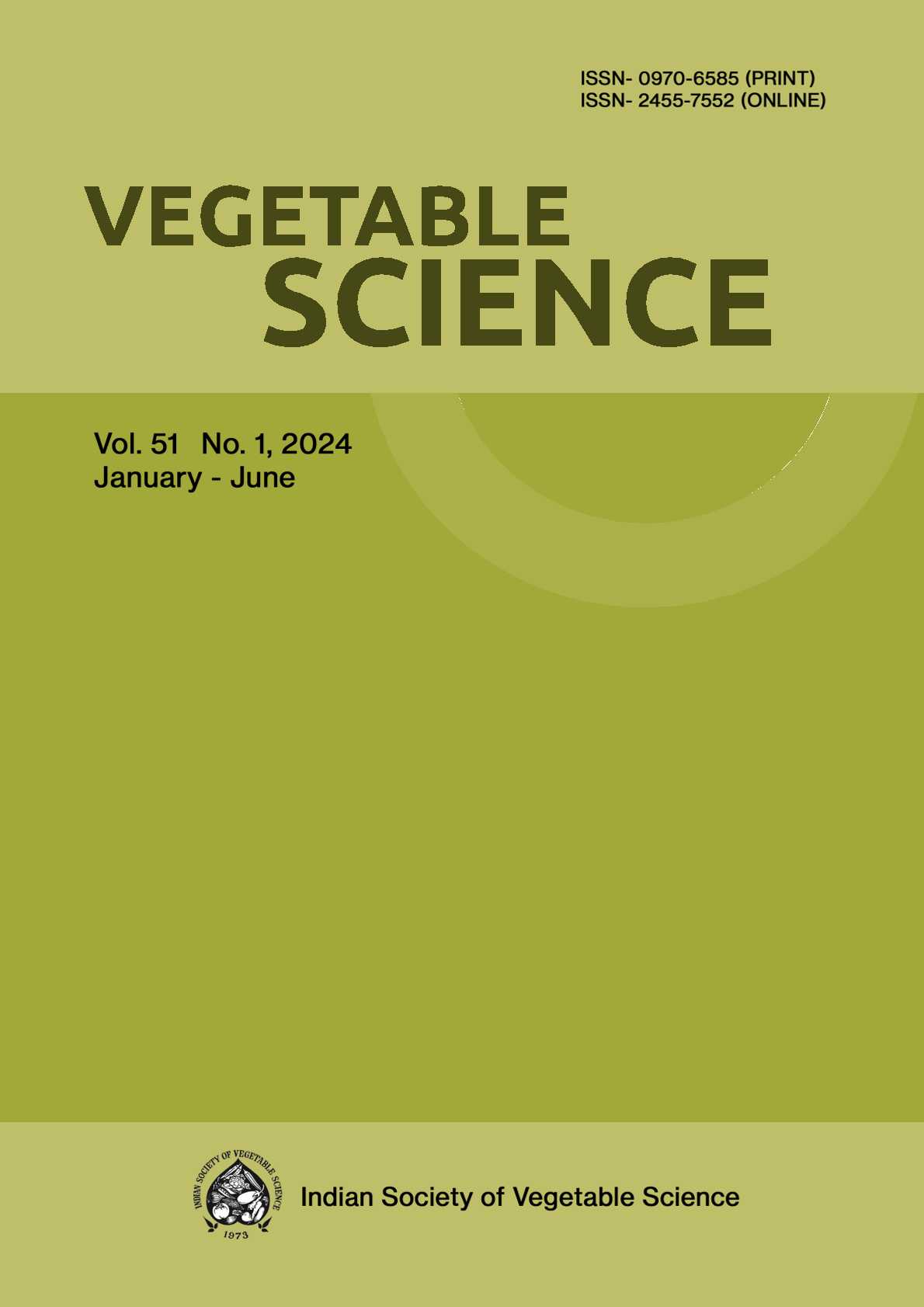Effect of different priming agents on plant growth, fresh leaf yield, seed yield and economics of seed production in coriander
DOI:
https://doi.org/10.61180/vegsci.2024.v51.i2.09Keywords:
Coriander, Seed priming, PEG, GA3, Thiourea, KCl, KNO3Abstract
Coriander is an annual herb widely grown for its seeds, as a spice and for essential oil manufacturing all over the world. Moisture and temperature stresses are the major constraints to rapid and uniform crop establishment in the field. Therefore, a field research trial was conducted using coriander cv. “Solan Selection” to study the effect of different seed priming treatments on fresh crop production, seed yield and economics of seed production during 2021-22. Seeds were primed with different priming agents, namely, PEG 6000 (@ -0.75 MPa for 12 hours), GA3 (@ 25 ppm for 18 hours), thiourea (@ 500 ppm for 18 hrs), KCl (@ 1.0% for 12 hours), KNO3 (@ 1.0 % for 12 hrs) and hydropriming (for 12 hours) along with control. It was concluded that treatment T1 i.e. seed priming with PEG 6000 @ -0.75 MPa for 12 hours, was found to be best among all seed priming treatments and resulted in significantly highest green leaf yield, plant height, number of branches plant-1, number of umbels plant-1, number of seeds umbel-1, minimum days to seed maturity, highest seed yield, biological yield, 1000 seed weight and maximum B: C ratio under mid-hill conditions of Himachal Pradesh.
Downloads
Published
Issue
Section
License
Copyright (c) 2024 Ankita Bharti, Rajender Sharma, DK Mehta, Vinay (Author)

This work is licensed under a Creative Commons Attribution-NonCommercial-NoDerivatives 4.0 International License.






